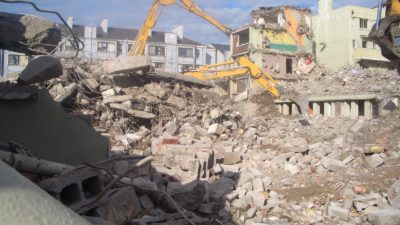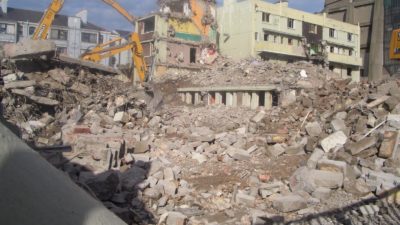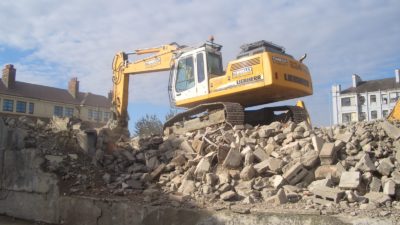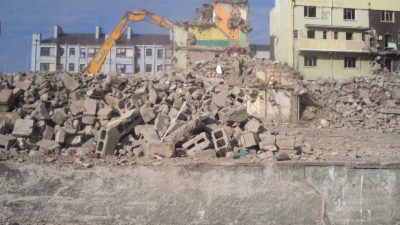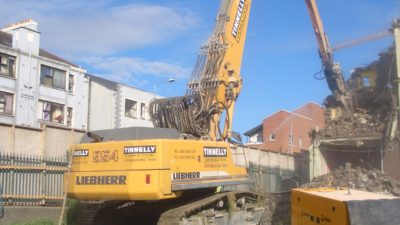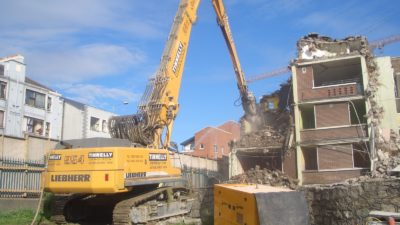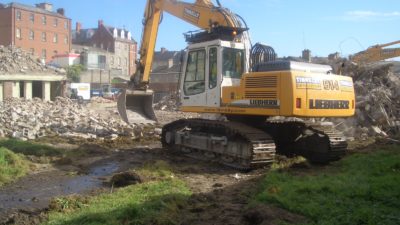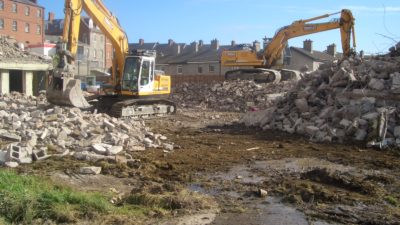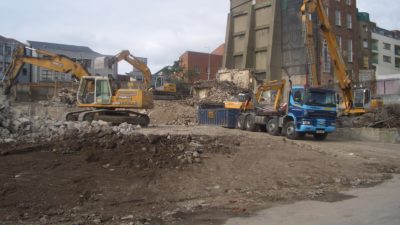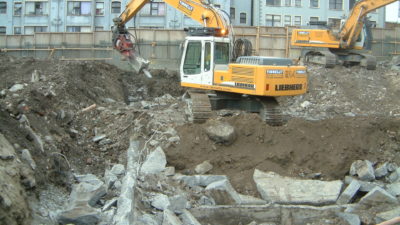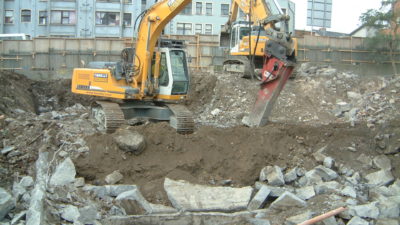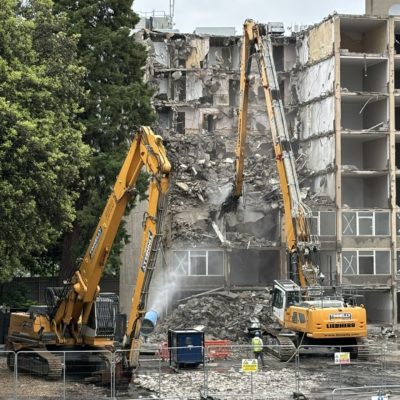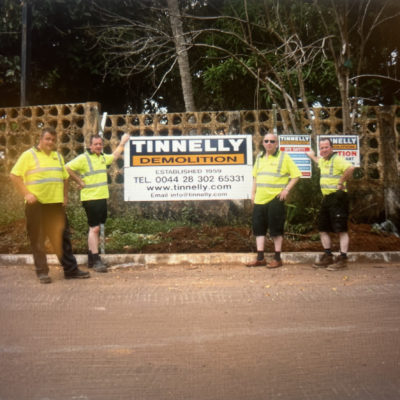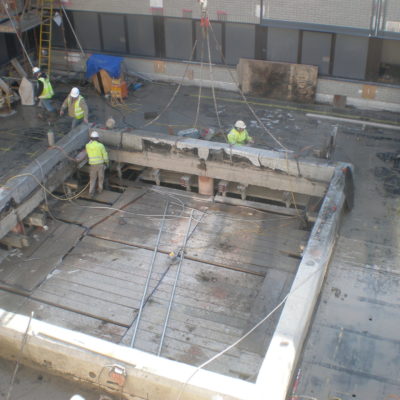For this project Tinnelly Group carried out the complete demolition of the three blocks of flats known as Sean Treacy House, in 2007.
These works were carried out after the complete removal of all the asbestos containing materials. The building was stripped from all rubbish unfixed furnishings and timber.
The buildings were then demolished using a high reach demolition excavator and conventional demolition excavator’s.
A Liebherr 954 high reach machine was used on this project. This machine has been specifically designed for high rise inner city demolition contracts, the high reach machine is one of the most technologically advanced machine available to execute this type of work. Since then Tinnelly Group have also invested in a Liebherr 960 which is currently the biggest high reach owned by an Irish company.
For this project, the high reach Liebherr 954 was fitted with a rotating concrete pulveriser that was used for crushing localised sections of the structure. The pulveriser greatly reduces vibration and stress on the structure, compared to the conventional techniques used for demolition.
Prior to commencement of this project, the Liebherr 954 was transported to the site in the early hours of the morning due to the transportation requirements and restrictions on this type of load entering the city limits.
The high reach machine commenced with the demolition of the floor slabs between the roof and third floor. The slabs where demolished in approximately 3 metre sections on plan between the gable wall and the next internal party wall, from the 1st floor to the roof level.
Demolition then commenced on the ground floor slab and continued in sequence up the floors to roof level was reached. This prevented loading the floors and allowed pulverised debris to fall to ground floor level with no obstructions.
A second Liebherr 934 demolition excavator was mobilised to process the reinforced concrete and then load the arisings onto 8 wheeled tipper lorries to be taken to a licensed disposal facility.
Demolition operatives where also on mobile elevated working platforms to gain access to the area which was being demolished. The area which the concrete pulverisor was working on was sprayed with water. The operatives using the MEWP and the fire hose were be able to contain any dust created at the source of the demolition.
The concrete walls were then demolished at the lower levels using either a concrete pulverisor or a hydraulic rock hammer fitted to a Liebherr 934 demolition excavator. The concrete was processed to remove the reinforcing steel and then transported off site to licensed disposal facilities.
A Demolition excavator track machine equipped with a hydraulic rock hammer then broke up the concrete floor slab and the concrete foundations. The floor slab and foundations were stockpiled on the footprint of the building until enough broken concrete has been produced on site for the mobilisation of a mobile concrete crusher.
Some of the concrete and masonry arisings from the demolition works were crushed on site and used to fill the voids created by the removal of deep structures of foundations.
This was another project Tinnelly Group were proud to deliver.

